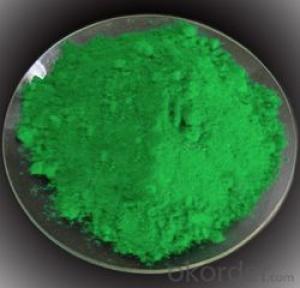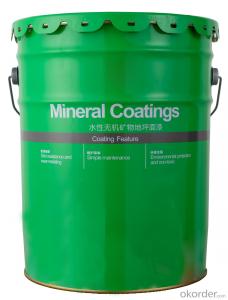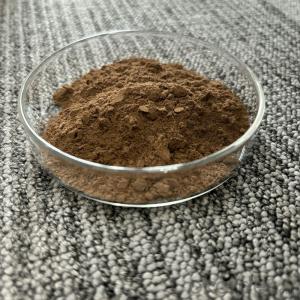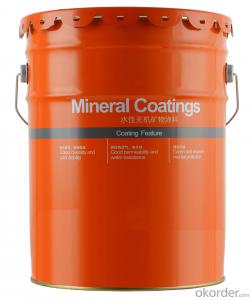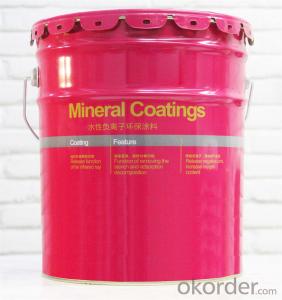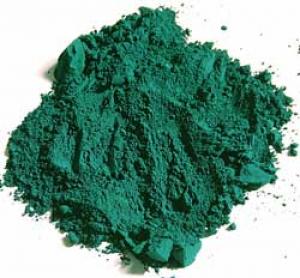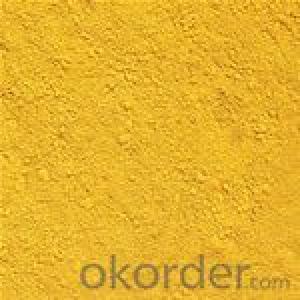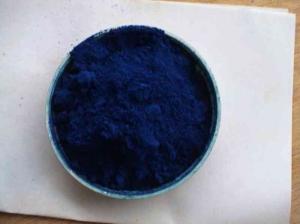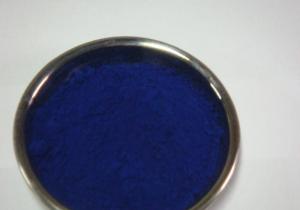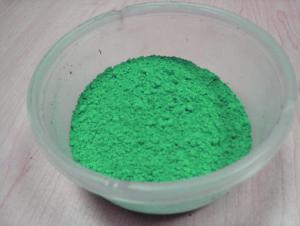Cobalt Green Pigment Organic Pigment Powder
- Loading Port:
- Tianjin
- Payment Terms:
- TT OR LC
- Min Order Qty:
- 500 kg
- Supply Capability:
- 6000000 kg/month
OKorder Service Pledge
OKorder Financial Service
You Might Also Like
Cobalt Green Specifications
- Cobalt Green
- Best quality
- Fast delivery
- Factory offer
- Free sample
Cobalt Green Product Inforamtion:
Chemical Name: Cobalt Titanate Green Spinel
Chemical Composition: Co/Ti/Ni/Zn Oxide
Color Index Name: Pigment Green 50 /P.G.50
Color Index Number: 77377
CAS Number: 68186-85-6
Physical Form: Green Powder
Crystal Pattern: Spinel Pattern
Cobalt Green Product Characteristics:
Pigment Green 50 is a bright color with yellowish green, it is also one kinds of environmental protection pigments, which is internationally recognized as non-toxic pigments. It is easy to disperse, with excellent heat resistance,lightfastness, weather resistance, acid & alkali resistance and high infrared reflectivity.
Cobalt Green Applications:
It can be used in coil coatings, powder coatings, automobile coatings, outdoor architectural coatings, camouflage coatings, painting coatings, road sign coatings, as well as engineering plastics, general plastics, toys plastics, food packaging plastics, printing ink, color masterbatch, and other building materials,such as high-performance industrial coating, cement, concrete, roofing materials, as well as ceramics, etc.
Cobalt Green Main Technical Data:
Heat Resistance: ≥1000°C
Light Resisrtance(Grade 1-8): 8
Weather Resisrance(Grade 1-5): 5
Acid Resistance(Grade 1-5): 5
Alkali Resistance(Grade 1-5): 5
Oil Absorption: 16-20g/100g
Density: 4.01-5.01 g/cm3
PH: 6-9
Mean Particle Size: 1.1-2.5 µm
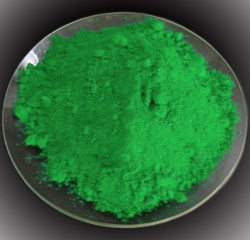

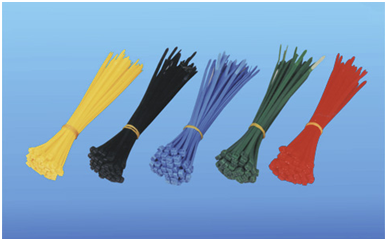
- Q:are photosynthetic pigments separated based on their polarity or based on their molecular structure?Thanks
- Molecular structure... Chlorophylls are greenish pigments which contain a porphyrin ring. This is a stable ring-shaped molecule around which electrons are free to migrate. There are several kinds of chlorophyll, the most important being chlorophyll a. This is the molecule which makes photosynthesis possible, by passing its energized electrons on to molecules which will manufacture sugars. All plants, algae, and cyanobacteria which photosynthesize contain chlorophyll a. A second kind of chlorophyll is chlorophyll b, which occurs only in green algae and in the plants. A third form of chlorophyll which is common is (not surprisingly) called chlorophyll c, and is found only in the photosynthetic members of the Chromista as well as the dinoflagellates. The differences between the chlorophylls of these major groups was one of the first clues that they were not as closely related as previously thought. Carotenoids are usually red, orange, or yellow pigments, and include the familiar compound carotene, which gives carrots their color. These compounds are composed of two small six-carbon rings connected by a chain of carbon atoms. As a result, they do not dissolve in water, and must be attached to membranes within the cell. Carotenoids cannot transfer sunlight energy directly to the photosynthetic pathway, but must pass their absorbed energy to chlorophyll. For this reason, they are called accessory pigments. One very visible accessory pigment is fucoxanthin the brown pigment which colors kelps and other brown algae as well as the diatoms.
- Q:Is gel food coloring a pigment or a dye?
- Dyes contain pigments, my friend. What is a pigment? They are like little beads. Very very tiny beads of the same color. Then if you spread these out, they give the thing a color. For example, the little green beads in leaves give it a green color. Pigment in our hair gives it a blonde/auburn/brown/black color. What is a dye? A dye is a liquid made up of water and pigments. The pigments are dissolved in water (well not really dissolve just that you cant see the beads) so that it's easier for us to use it. Everything that has a color is made up of pigments. So, gel food coloring is a thicker version of a dye that contains pigments.
- Q:Please and thank you, it doesn't say so on the website.
- Mac Pigment Ingredients
- Q:is it the ink on regular printers?
- Some printers use only pigmented ink. Others use dye based and then some use a combination of both. Dye based ink is basically water based with a dye added to it. Pigmented ink has a solvent base with dye added. Pigment ink and dye based ink have both advantages and disadvantages. Dye based ink have better colors but pigment are more water and fade resistant. Dye based inks are therefore better for photos. I have a printer that has 4 dye based inks and a black pigment ink. Mine uses the dye based black and colours for pictures and the pigmented black is used for text. So the answer is yes. Pigmented ink is used in some regular printers.
- Q:what pigment are? give two example
- pigments found in plants, vegetables and fruits, make them look colorful. pigments found in animal skins, givie us colorful animal skins with variety of shades. Plant pigment Chlorophyll makes plant leaves look green. Plant pigment Carotenoid makes fruits and vegetables look orange, yellow, red. Plant pigment Phycobilin makes plants look bluish green or red.
- Q:There was a question, not to long ago, that asked are L'oreal HIP pigments good? What are pigments?
- Pigments are tones. Like if you have a base color of white and add a light pink and as you go down it gets darker. There would be several pigments of pink tones.
- Q:I got this question from my A2 Biology but I can't find the answer. Does anybody know?
- Photosynthesis in plants is dependent upon capturing light energy in the pigment chlorophyll, and in particular chlorophyll a. This chlorophyll resides mostly in the chloroplasts and gives leaves their green color. The range of light absorption in leaves is extended by some accessory pigments such as the carotenoids, but does not cover the entire visible range - that would make the leaves black! Some plants and plantlike organisms have developed other pigments to compensate for low light or poor use of light. Cyanobacteria and red algae have phycocyanin and allophycocyanin as accessory pigments to absorbe orange light. They also have a red pigment called phycoerythrin that absorbs green light and extends the range of photosynthesis. The red pigment lycopene is found in vegetables. Some red algae are in fact nearly black, so that increases their photosynthetic efficiency. Brown algae have the pigment fucoxanthin in addition to chlorophyll to widen their absorption range. These red and brown algae grow to depths around 270 meters where the light is less than 1% of surface light. Chlorophylla-a is the primary pigment for photosynthesis in plants. Its structure is shown at left. It has the composition C55H72O5N4Mg. It exhibits a grass-green visual color and absorption peaks at 430nm and 662nm. It occurs in all photosynthetic organisms except photosynthetic bacteria. Chlorophyll-b has the composition C55H70O6N4Mg, the difference from chlorophyll-a being the replacement of a methyl group with a CHO. It exhibits a blue-green visual color and absorption peaks at 453nm and 642nm. It occurs in all plants, green algae and some prokaryotes. There is usually about half as much chlorophyll-b as the -a variety in plants.
- Q:What happens to the yellow pigments in a leaf during the summer months?
- Carotenes and xanthophylls are always present in the leaves of plants. During the summer, the abundant chlorophyll masks the presence of the yellows, oranges, and reds that are also present. These other pigments are called accessory pigments and also absorb light energy used in photosynthesis.
- Q:wut is the diff between those 2?
- pigments are loose powder and they stay for longer even the colour looks brighter than eyeshadows.
- Q:I bought the color Frozen White, and the store sample was sort chunky too, and it doesn't go on my skin well because of that. How can I apply it on smoothly? do I need to add a little water??? help!!!!
- I would recommend applying the pigment wet. There are a multitude or different products that you can use to wet the pigment; Fix Plus (from MAC), mixing mediums (you can usually find those at Sephora), or water. Although I would try the first two over water. Hope this helps!
1. Manufacturer Overview |
|
|---|---|
| Location | |
| Year Established | |
| Annual Output Value | |
| Main Markets | |
| Company Certifications | |
2. Manufacturer Certificates |
|
|---|---|
| a) Certification Name | |
| Range | |
| Reference | |
| Validity Period | |
3. Manufacturer Capability |
|
|---|---|
| a)Trade Capacity | |
| Nearest Port | |
| Export Percentage | |
| No.of Employees in Trade Department | |
| Language Spoken: | |
| b)Factory Information | |
| Factory Size: | |
| No. of Production Lines | |
| Contract Manufacturing | |
| Product Price Range | |
Send your message to us
Cobalt Green Pigment Organic Pigment Powder
- Loading Port:
- Tianjin
- Payment Terms:
- TT OR LC
- Min Order Qty:
- 500 kg
- Supply Capability:
- 6000000 kg/month
OKorder Service Pledge
OKorder Financial Service
Similar products
New products
Hot products
Related keywords
